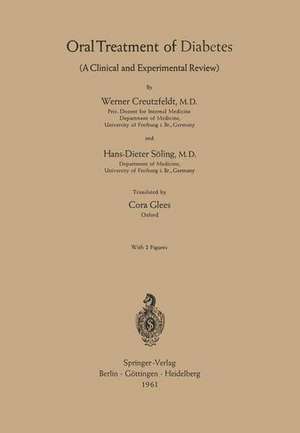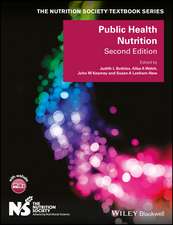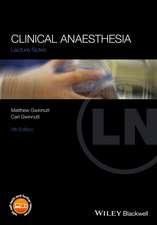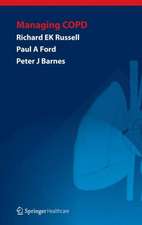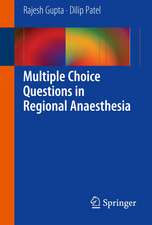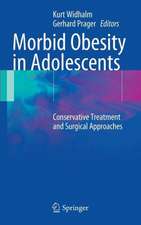Oral Treatment of Diabetes: A Clinical and Experimental Review
Traducere de Cora Glees Autor Werner Creutzfeldt, Hans-Dieter Sölingde Limba Germană Paperback – 27 iul 2012
Preț: 396.80 lei
Preț vechi: 417.68 lei
-5% Nou
Puncte Express: 595
Preț estimativ în valută:
75.93€ • 78.83$ • 63.32£
75.93€ • 78.83$ • 63.32£
Carte tipărită la comandă
Livrare economică 22 martie-05 aprilie
Preluare comenzi: 021 569.72.76
Specificații
ISBN-13: 9783642526930
ISBN-10: 3642526934
Pagini: 204
Ilustrații: VIII, 192 S. 1 Abb.
Greutate: 0.33 kg
Ediția:1961
Editura: Springer Berlin, Heidelberg
Colecția Springer
Locul publicării:Berlin, Heidelberg, Germany
ISBN-10: 3642526934
Pagini: 204
Ilustrații: VIII, 192 S. 1 Abb.
Greutate: 0.33 kg
Ediția:1961
Editura: Springer Berlin, Heidelberg
Colecția Springer
Locul publicării:Berlin, Heidelberg, Germany
Public țintă
ResearchCuprins
Blood sugar lowering sulphonamide derivatives.- A. Thiodiazole derivatives.- I. Experiments.- II. Clinical experience with thiodiazole derivatives.- B. Sulphonylureas.- I. Constitution and activity.- a) Sulphonylureas.- b) N-sulphonyl-N’acylureas.- c) Sulplhoonylurethane.- d) 2-sulphonamido-1,3,4-thiodiazoles.- e) Sulphonylthioureas.- f) Ineffective sulphonylureas and their derivatives.- II. Animal experiments with BZ 55 and D 860.- a) Pharmacology and toxicity.- 1. Methods for determining in blood and urine.- 2. Absorption from the intestine.- 3. Distribution in the organism, tissue and protein bond.- 4. Degradation and excretion.- 5. Plasma level and blood sugar lowering (relationship of dose and effect).- 6. Bacteriostatic characteristics.- 7. Toxicity in animals.- ?) Acute toxicity.- ?) Chronic toxicity.- 8. Incompatibility and the influence of other drugs on the mode of action.- b) Mode of action.- 1. Research in vitro.- ?) Muscle tissue.- ?) Adipose tissue.- ?) Liver tissue.- ?) Insulinase system.- ?) Insulin aggregation in vitro.- ?) Respiratory activity of kidney slices and dopadecarboxylase.- 2. Effect in the eviscerated, decerebrated and diabetic animal.- ?) Eviscerated and decerebrated animal.- ?) Diabetes after total pancreatectomy.- ?) Alloxan diabetes.- ?) Pituitary and steroid diabetes.- ?) Starvation diabetes (“Hungerdiabetes”).- ?)Spontaneous canine diabetes and hereditary adiposity hyperglycaemia syndrome in the mouse.- 3. Influencing of ?-cells and the glucagon effect.- 4. ?-cells and insulin secretion.- ?) Morphological findings in the ?-cell system.- ?) Pancreatic insulin content.- ?) Activity of the plasma insulin and cross-circulation experiments.- ?) The action on various metabolic parameters influenced by insulin.- ?) Glucose tolerance.- ?)The mechanism of ?-cell influencing.- 5. The role of other endocrine organs.- ?) Thyroid.- ?) Supra-renals.- ?) Pituitary.- 6. The role played by the liver.- ?) Depression of the blood sugar in the hepatectomised animal.- ?) Liver glycogen.- ?) Fat and protein metabolism in the liver.- ?) The action on the glucose output by the liver.- 7. The influence on glucose absorption from the intestine.- III. Clinical observations with BZ 55 and D 860.- a) Plasma level, degradation and excretion in man.- 1. BZ 55.- 2. D 860.- b) Results of the sulphonylurea therapy in diabetes mellitus.- 1. Investigations on the controllability of diabetics using oral therapy.- ?) Statistical results.- ?) Test methods for judging controllability.- ?) Therapeutic successes in special cases of diabetes and the effect in rare disturbances in the carbohydrate metabolism.- 2. Lasting success, indication and contra-indication, treatment.- ?) The problem of the so-called seconadry failures in diabetes therapy.- ?) Indication and contra-indication.- ?) Combination therapy with insulin.- ?) Practical treatment.- 3. Side-effects, hypersensitivity reaction, cases of death.- ?) Hypoglycaemia.- ?) Skkin reactions.- ?) Haematopoetic system.- ?) Liver damage.- ?) Kidney changes.- ?) Nervous system.- ?) Thyroid gland.- ?) Gastro-intestinal disturbances, intestinal flora.- ?) Intolerance to alcohol.- c) Clinical experimental research on the mechanism of action of the sulphonylureas.- 1. Plasma insulin determination.- 2. Potentiating of the insulin effect and insulin degradation.- 3. Acute blood sugar decrease and effect on various metabolic parameters influenced by insulin.- 4. Effect on hepatic metabolism in man.- 5. Influence on the glucagon effect.- 6. Influence on adreno-cortical function.- 7. Islet-cell system in diabetics receiving sulphonylurea therapy.- 8. Conclusions about the mode of action in man and animal from the experiments.- d) Sulphonylureas as therapeutics in non-diabetic diseases.- 1. Dermatological diseases.- 2. Diseases ofgthe liver.- 3. Epilepsy.- 4. Psychiatric shock therapy.- IV.Other clinically tested sulphonylureas.- a) 1-cyclohexyl-3-p-tolylsulphonylurea (K 386).- b) N-propyl-3-p-chlorbenzoylsulphonylurea (chlorpropamide P 607).- 1. Methods of determination ; distribution and excretion in animals and man.- 2. Toxicity, acute blood sugar decrease and mechanism of action.- 3. Permanent therapy and side-effects.- c) N-(3-amino-4-methylbenzoylsulphonyl)-N’-cyclohexylurea (Metahexamide).- 1. Methods for determination, distribution, excretionin animals and man.- 2. Toxicity, acute blood sugar decrease and mode of action.- 3. Long-term therapy and side-effects.- Guanidine and guanidine derivatives.- A. Guanidine.- a) Pharmacological and metabolic properties.- b) Acute toxicity.- c) Investigations on the mechanism of the blood sugar lowering by guanidine.- B. Constitution and the blood sugar lowering effect of various guanidine derivates.- C. Experimental research on various guanidine derivatives.- I. Pharmacology and toxicology.- a) Acute toxicity.- 1. Synthalin.- 2. Biguanides.- 3. Symptomatology of the acute poisoning.- b) Chronic toxicity.- c) Comparing the effectiveness of guanidine derivatives and the sensitivity in different animal species.- d) The guanidine-like properties of the guanidine derivatives.- e) Action of glucose in the hypoglycaemic shock.- f) Initial hyperglycaemia, epinephrine secretion, the effectiveness of epinephrine and glucagon.- g) Liver glycogen.- II. Animal experiments on the mechanism of blood sugar lowering through guanidine derivatives.- a) Investigations with synthalin.- b) Investigations on the biguanides.- 1. Investigations in vitro.- ?) Glucose uptake.- ?) Glucose output from liver tissue, the glycogen content of liver slices and diaphragm.- ?) Oxygen consumption.- ?) Glyycgolysis.- ?) Cellular permeability for glucose and other sugars.- ?) Investigations on the localisation of the biguanide effect in the intermediary metabolism.- ?) Potentiation of the insulin effect in vitro.- 2. Investigations on the non-diabetic animal.- ?) Glucose uptake.- ?) Glycolysis.- ?) Hepatic glucose output.- ?) Effect on gluconeogenesis.- ?) Inhibition of insulin degradation.- ?) Combination with insulin and tolbutamide.- ?) The effect of methylene blue on the blood sugar decrease.- ?) Indirect metabolic changes caused by epinephrine release.- ?) Stimulation of insulin secretion.- ?) ?-cell changes following guanidine derivatives.- ?) Effect on the glucose absorption from the intestine.- 3. Experimental diabetes.- ?) Diabetes following pancreatectomy.- ?) Alloxan diabetes.- ?) Phlorhizin diabetes.- III. Investigations on the mechanism of action in man.- a) Theory of glycolysis.- b) Liver-glucose output and peripheral glucose utilization.- c) Other endocrine organs.- d) Stimulation of insulin secretion.- e) Conclusion.- D. Clinical experiments with various guanidine derivatives.- I. Synthalin.- a) Dosage.- b) Effect of synthalin on the diabetic metabolic state.- 1. Glucosuria and hypoglycaemia.- 2. Ketoacidosis.- c) Indication range.- d) Toxic effects of synthalin in man.- 1. Acute toxic symptoms.- ?) Symptomatology.- ?) Measures for preventing symptoms of intolerance.- 2. Toxic symptoms during long-term synthalin treatment.- ?) Liver damage.- ?) Kidney damage.- II. Galegine.- III. Biguanides.- a) The effectiveness of the biguanides on the blood sugar in the healthy human subject.- b) Results of the biguanide therapy in diabetes mellitus.- 1. Investigations on the controllability of diabetes with biguanides alone.- 2. Effectiveness in different forms of diabetes.- ?) Stable diabetes in the adult.- ?) Mild juvenile diabetes.- ?) Insulin deficiency diabetes of the juvenile and adult.- ?) Rare, special forms of diabetes.- 3. Metabolic observations in diabetics treated with biguanides.- ?) Daily blood sugar profile, glucose tolerance, insulin and glucagon loading.- ?) Biguangide therapy and ketosis.- 4. Indication and contra-indication, practical treatment.- ?) Indication and contra-indication.- ?) Combined treatment with insulin and sulphonylureas.- ?)Therapeutical measures in control and dosage.- 5. Symptoms of intolerance and toxicity of the biguanides in man.- ?) Symptoms of intolerance and their treatment.- ?) Hypersensitivity reaction and organ changes.- 6. Comparison between synthalin and biguanide therapy in diabetes.- Further substances proved as oral anti-diabetic drugs.- A. Salicylate and salicylate derivatives.- I. Experimental investigations.- a) Blood sugar decrease in the animal.- b) Investigations on the mechanism of the blood sugar decrease.- 1. Investigations in vitro.- 2. Experiments in vivo.- 3. Uncoupling of oxidative phosphorylation.- II. Investigations with salicylates and salicylate derivatives in man.- a) The effect of salicylates and salicylate derivatives on the metabolism of nondiabetics.- b) The effect in diabetes mellitus.- 1. Clinical experience.- 2. Side-effects.- 3. Practical value of the salicylates in the diabetes therapy.- B. Other benzoic acid derivatives.- I. p-amino benzoic acid (PABA).- II. p-aminosalicylic acid (PAS).- C. 2,4-dinitrophenol (DNP).- D. Mesoxalic acid.- I. Experimental investigations.- a) Toxicity.- b) Mechanism of action.- II. Clinical investigations.- E. Antihistamines and sympathicolytica.- I. Secalealkaloides.- II. Sympatheticolytic imidazole derivatives.- III. Antihistamines.- IV. Mechanism of action.- Blood sugar lowering substances without clinical significance.- A. Hypoglycin A and B.- I. Structure of the hypoglycins.- II. Experimental investigations.- a) Toxicity and the blood sugar lowering.- b) Mechanism of action.- 1. Investigations in vitro.- 2. Investigations in vivo.- B. Mono-iodo-acetic acid and iodo-acetamide.- C. Tris(hydroxy-methyl)-amino-methane (TRIS-buffer).- D. Less important blood sugar decreasing drugs and insufficiently investigated preparations.- References.
